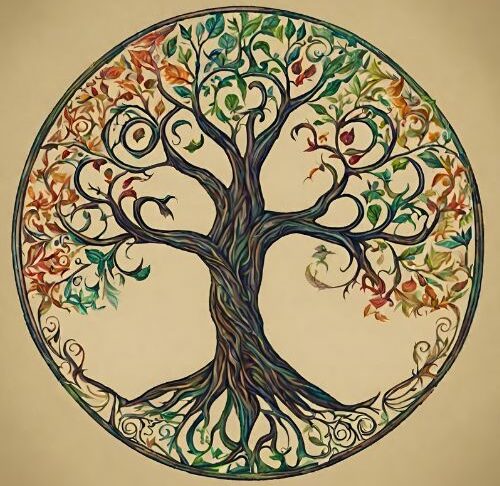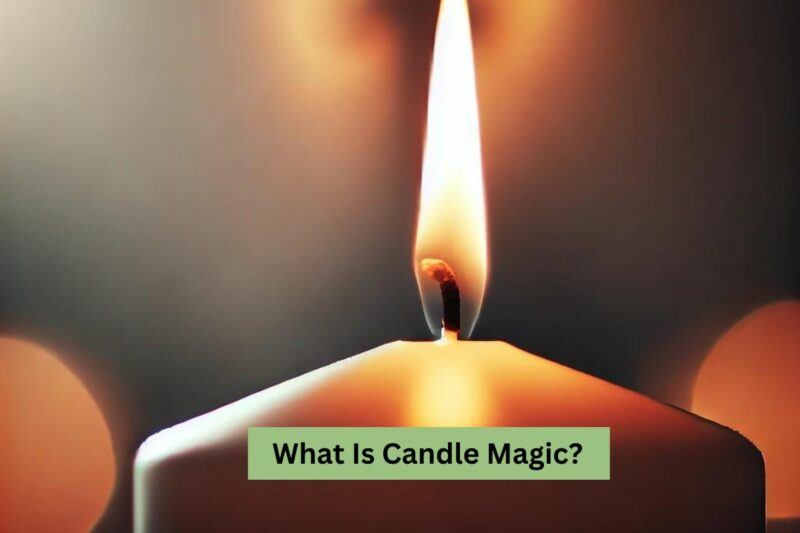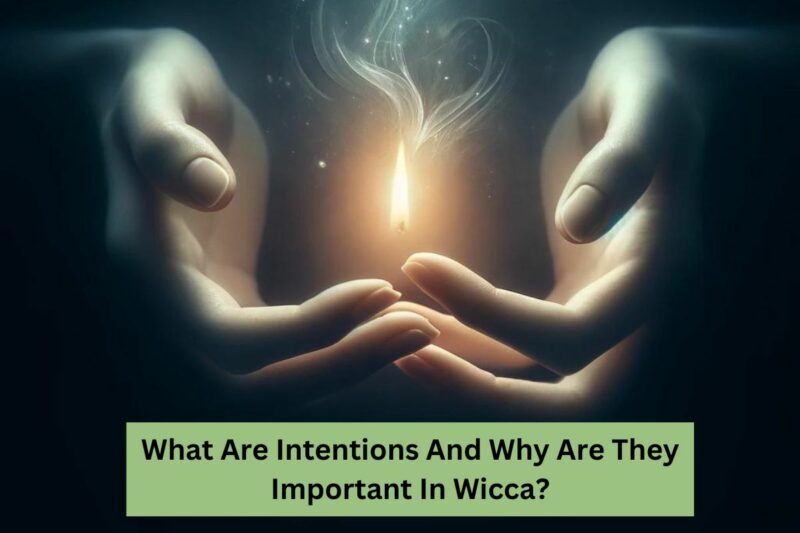- Role in Wicca: Cernunnos is a central figure in Wicca, known as the Horned God, who embodies nature, fertility, and the cycles of life and death.
- Symbolism and Energy: His antlers symbolize regeneration, connecting deeply with nature, while he brings masculine energy that balances the divine partnership with the Goddess.
- Influence in Rituals: Cernunnos is integral to Wiccan rituals, especially during key Sabbats like Beltane and Samhain, where he helps practitioners align with natural and seasonal cycles.
- Modern Relevance: Adapted to contemporary spiritual practices, Cernunnos’s roles have expanded to include environmental activism and influencing modern pagan practices, making him relevant in today’s world.
- Cultural Impact: Beyond religious practices, Cernunnos influences popular culture and media, often representing the spirit of untamed nature and drawing new interest in pagan traditions.
Who Is Cernunnos? Cernunnos is a key figure in your Wiccan practice, often referred to as the Horned God. He embodies the forces of nature, growth, and life’s natural cycles. His horns connect you to wild, untouched places and mark him as the guardian of animals and forests. In your practice of Wicca, Cernunnos contributes a balance of male energy, working alongside the Goddess. This article introduces you to Cernunnos, explaining what he represents and why he’s important in your Wiccan rituals. You’ll discover how he remains relevant in today’s practice of Wicca and his role in other spiritual paths as well.
Who Is Cernunnos?

You know Cernunnos as the Horned God, a prominent figure in Wicca who symbolizes nature, fertility, and animals. He has roots in ancient Celtic traditions, where he was revered as a god of the forest, life, and the underworld. In Wicca, you recognize Cernunnos as the male counterpart to the Goddess, balancing the divine partnership.
He’s depicted with horns, which highlight his deep connection to the wild and natural world. Cernunnos is not just about wildness; he also protects forests and their creatures. You see him playing several roles in Wicca, combining the energies of a guardian, a symbol of vitality, and a wise figure.
The stag’s antlers are a key symbol for Cernunnos. They represent regeneration, reflecting the natural cycle of the seasons and the constant renewal of life. The antlers signify spiritual authority and a strong bond with the natural world.
For you as a follower of Wicca, Cernunnos’ antlers serve as a bridge to nature’s cycles and the environment, underscoring your religion’s focus on living in harmony with the earth. This connection is a reminder of how closely tied you are to nature, encouraging you to respect and care for the environment as a sacred duty.
Cernunnos represents masculine energy and the force of nature’s fertility in Wicca. You often call upon him during festivals celebrating growth and renewal, like Beltane, and in rituals tied to planting and harvesting. His presence is essential in the Great Rite, which symbolizes the union of male and female energies and maintains the balance of nature.
But Cernunnos’ influence extends beyond just crops and harvests. He inspires creativity and personal growth, pushing you for physical and spiritual advancements. His role is central to helping you grow and find your path in both your personal life and your community.
Cernunnos in Wiccan Rituals
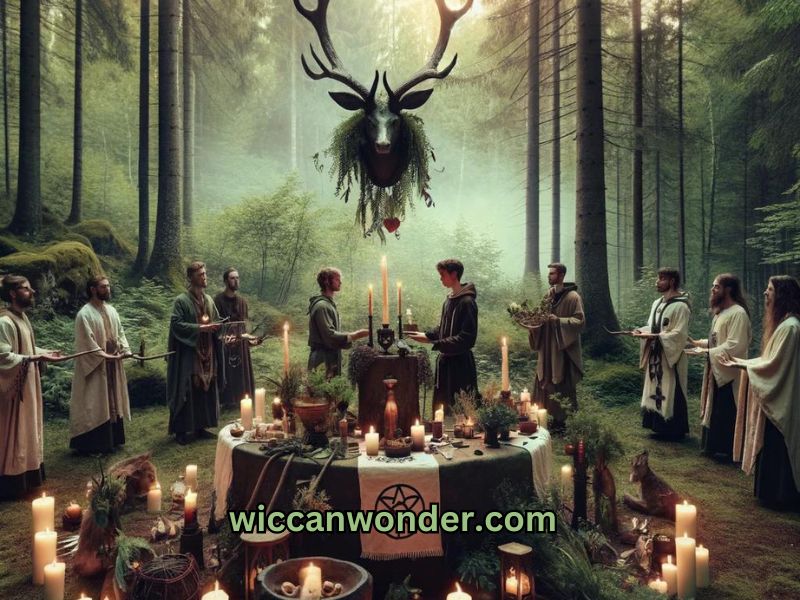
Cernunnos plays an important role in the Wheel of the Year, the Wiccan calendar that marks eight seasonal festivals, including Sabbats like Beltane, which heralds spring, and Samhain, which ushers in winter. You can feel his presence deeply woven into these celebrations that honor the cycles of nature and the changing seasons. During these times, you often call to Cernunnos using chants, lighting candles, or making offerings such as antlers or leaves to draw upon his energy, enhancing your connection to the natural world and aiding your transition through these important seasonal changes.
Whether practicing alone or within a coven, appealing to Cernunnos shapes your spiritual experiences. It offers you personal strength and growth when you practice alone and provides protective and nurturing energies to your group rituals. These practices seek his blessings for individuals and the community, emphasizing his role as a guardian in tune with nature’s rhythms.
🌕 Wiccan Sabbats and Cernunnos 🌿 |
|||
|---|---|---|---|
| Sabbat | Date | Significance | Connection to Cernunnos |
| Samhain | October 31 | New Year, remembering the dead | 🍂 Cycle of death and rebirth |
| Yule | December 21 | Winter Solstice, rebirth of the Sun | ❄️ Renewal of light and life |
| Imbolc | February 1 | Preparation for spring, purification | 🌱 New growth, fertility |
| Brought to You by wiccanwonder.com | |||
Cernunnos’ influence is particularly prominent during the equinoxes and solstices—key moments in the Wheel of the Year known for significant growth and change. His ongoing recognition throughout these festivals reminds you of the enduring cycles of growth and decay, life and death, highlighting the interconnectedness of all elements within the natural world.
Through his guidance, Cernunnos promotes a balanced approach to both your personal and communal Wiccan activities, ensuring that you live in harmony with the earth’s cycles.
Ethics and Cernunnos
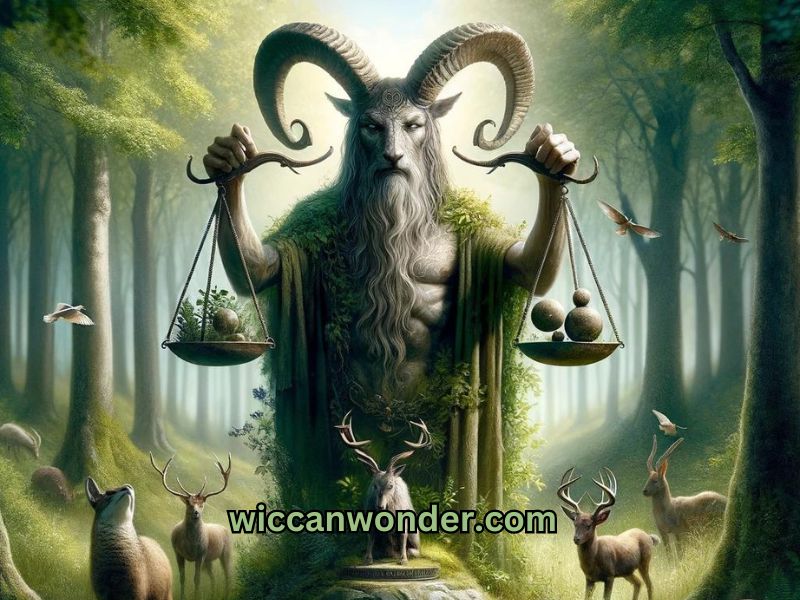
In your practice of Wicca, the Wiccan Rede offers you a simple yet powerful guideline: “An it harm none, do what ye will.” This teaches you that your actions should not harm others, including the environment. Cernunnos, with his deep connection to the natural world and his role as its protector, represents this ethical principle. His care for forests and animals teaches you to respect and protect nature.
When you call upon Cernunnos in rituals, you are reminded to consider how your actions affect the world around you. This helps you make choices that harmonize with nature and benefit your community. Honoring Cernunnos allows you to live by the values of the Wiccan Rede. In your rituals, this might mean choosing offerings that are natural and harmless to the environment, such as biodegradable materials, or symbolic gifts, such as flowers or stones. These practices demonstrate respect for nature, avoid harm, and promote sustainability.
Cernunnos also symbolizes fertility and growth, encouraging you to consider how you can support life in all its forms. This includes caring for the environment and promoting sustainable practices like planting trees or protecting wildlife.
In Wicca, Cernunnos represents masculine energy, which complements the feminine energy of the Goddess. This balance is important in your ethical practices, which value fairness and equality. You try to see things from all sides and keep this balance in your actions by respecting both male and female energies
In rituals, this balance is represented by including symbols and actions that honor both energies, ensuring that both are respected and valued. This practice serves as a reminder that ethical behavior should include a balance of views and contribute to harmony and fairness.
Cernunnos Today: Adapting Ancient Beliefs

In today’s Wicca, Cernunnos is more than just a character from old stories; he’s a real part of your spiritual life. You look to him as a guide who offers help and protection, especially when dealing with nature and taking care of the environment. You connect with Cernunnos by doing things that are important today, like looking after the environment and standing up for wildlife, making him relevant to today’s challenges.
You often include environmentally friendly actions in your rituals. Planting trees to honor him or joining in conservation work are ways you show your devotion, strengthen your bond with him, and show your commitment to your beliefs and the planet’s health.
You might also build a personal connection with Cernunnos through regular meditation or prayer, asking for his guidance or strength. You might have symbols like antlers or green candles on your altars to feel closer to him and to use his energy.
Community events and festivals often include stories about Cernunnos, helping everyone understand his importance and keep his spirit alive in their work.
Cernunnos’s strong ties to nature make him especially important in the part of Wicca that focuses on the environment. He represents the spiritual side of caring for the earth, reminding you that looking after nature is a sacred duty. This encourages you to adopt sustainable habits as a key part of your spiritual responsibilities.
Feeling inspired by Cernunnos, you may get involved in projects like cleaning up natural areas or protecting wildlife habitats. This shows that honoring Cernunnos today goes beyond just rituals—it leads to real actions that help the planet.
Cernunnos’ Impact on Different Spiritual Paths

Cernunnos is a key figure not just in your Wiccan practice but also in many other pagan traditions. You might notice that in these different traditions, he appears a bit differently or is known by other names, but his core traits stay the same. For example, in some Druid traditions, you might know Cernunnos for his link to the underworld and as a guide for souls, highlighting his role in life and death.
Other pagan groups might focus on his roles as a god of fertility and prosperity, encouraging you to call on him in rituals that aim to bring wealth or growth to your personal life and your community. This flexibility of pagan gods like Cernunnos shows how they meet the varied needs and views of their followers, including you.
Cernunnos also shows up in popular culture, where he often symbolizes the wild spirit of nature or acts as a symbol of pagan beliefs. You might see his image in books, movies, and art, which can help explain pagan ideas to more people. However, these portrayals sometimes oversimplify or change his image, which could lead to misunderstandings about his true nature.
His appearance in media often sparks your interest in pagan traditions, possibly drawing in new followers or sparking discussions about the relevance of ancient gods today.
The worship of Cernunnos in neo-pagan communities illustrates the flexibility of modern spirituality. In neo-paganism, elements from different pagan traditions often mix, creating rich, blended practices. This mixing lets you, as a follower, combine traditions, like Wiccan rituals with Celtic gods, enhancing your spiritual experiences and understanding.
This kind of spiritual mixing not only improves your own practices but also helps you appreciate more how old traditions can contribute to contemporary spiritual life, keeping gods like Cernunnos important and influential in a changing world.
Frequently Asked Questions about Cernunnos
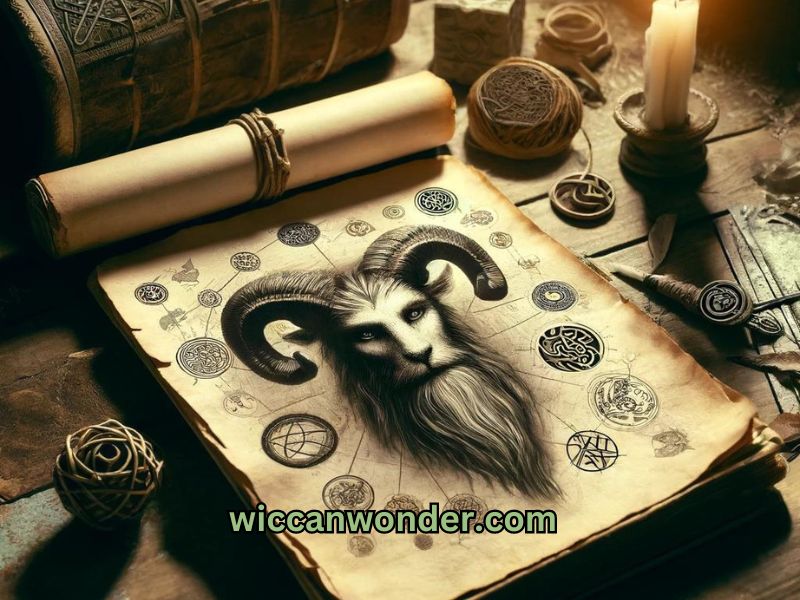
1. Is Cernunnos the same as the Devil?
No, Cernunnos is not the Devil. Some people think this because he has horns, which are sometimes seen in pictures of the Devil. However, in Wicca and other pagan traditions, Cernunnos is a good god who represents nature, growth, and the cycle of life.
2. Are there other horned gods in Wicca?
Yes, there are other gods with horns who are respected in Wicca and other pagan beliefs. For example, Pan is a Greek god of the wild and is shown with goat horns. He is also linked to nature and growth, like Cernunnos.
3. Can Cernunnos be a part of my daily practice?
Yes! You can include Cernunnos in your everyday rituals by setting up a small place at home with things that represent him, like antlers or pictures of deer. You can also say small prayers or think about his qualities like protection and growth each day.
4. Do I need to be Wiccan to work with Cernunnos?
No, you don’t need to be Wiccan to connect with Cernunnos. He is a figure that many people who appreciate nature and old stories like to feel close to, no matter their spiritual path.
5. How do Cernunnos and the Goddess work together?
In Wicca, Cernunnos and the Goddess balance each other. The Goddess often represents the earth and its caring qualities, while Cernunnos shows nature’s more active and wild side. Together, they show how different parts of life and nature depend on each other and work together.
Final Thoughts
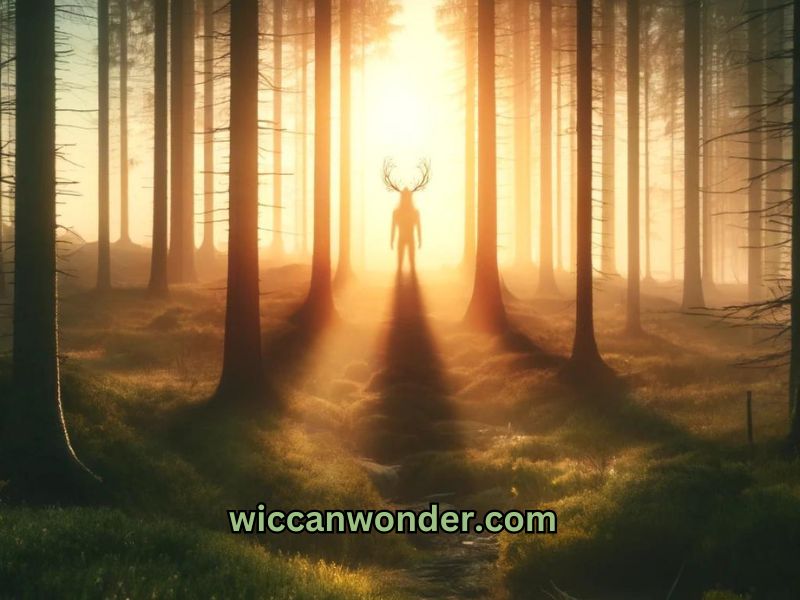
Cernunnos is more than just a symbol from ancient myths; he’s a vibrant part of modern Wiccan spirituality. His roles as protector of nature, symbol of fertility, and embodiment of masculine energy demonstrate his importance in maintaining balance within the faith and in the personal lives of practitioners. His influence stretches beyond Wicca into other pagan traditions and popular culture, showing how timeless and adaptable his figure is.
As our society continues to face environmental and ethical challenges, Cernunnos’ relevance seems only to grow. His connection to nature and the cycles of life invites us to reflect on our own interactions with the world around us and encourages a respectful and sustainable way of living.
How do you think ancient gods like Cernunnos fit into today’s spiritual practices? Do they bring something special that modern beliefs or figures don’t have? Please leave me a comment with your thoughts.
Blessed Be!
Taianne
Share the Love
Latest Posts

Welcome to WiccanWonder.com!
I’m Taianne, your guide on this enchanting journey into the realm of Wicca and witchcraft. Inspired by the magical stories of pop culture, I’ve transitioned from a casual fan to a dedicated explorer of Wicca’s true nature—a nature-based religion celebrating the divine, the cycles of nature, and living harmoniously with the earth. Through WiccanWonder.com, I aim to demystify Wicca, separating fact from fiction, and inviting others to explore its rich traditions and practices alongside me. As a fellow seeker, I’m here to share insights, discoveries, and open a space for dialogue and learning. Whether you’re new to Wicca, a seasoned practitioner, or simply curious about magic and spirituality, your presence enriches our journey. Let’s explore the wonder of Wicca together.
Feel free to contact me at Taianne@wiccanwonder.com
Blessed be!
